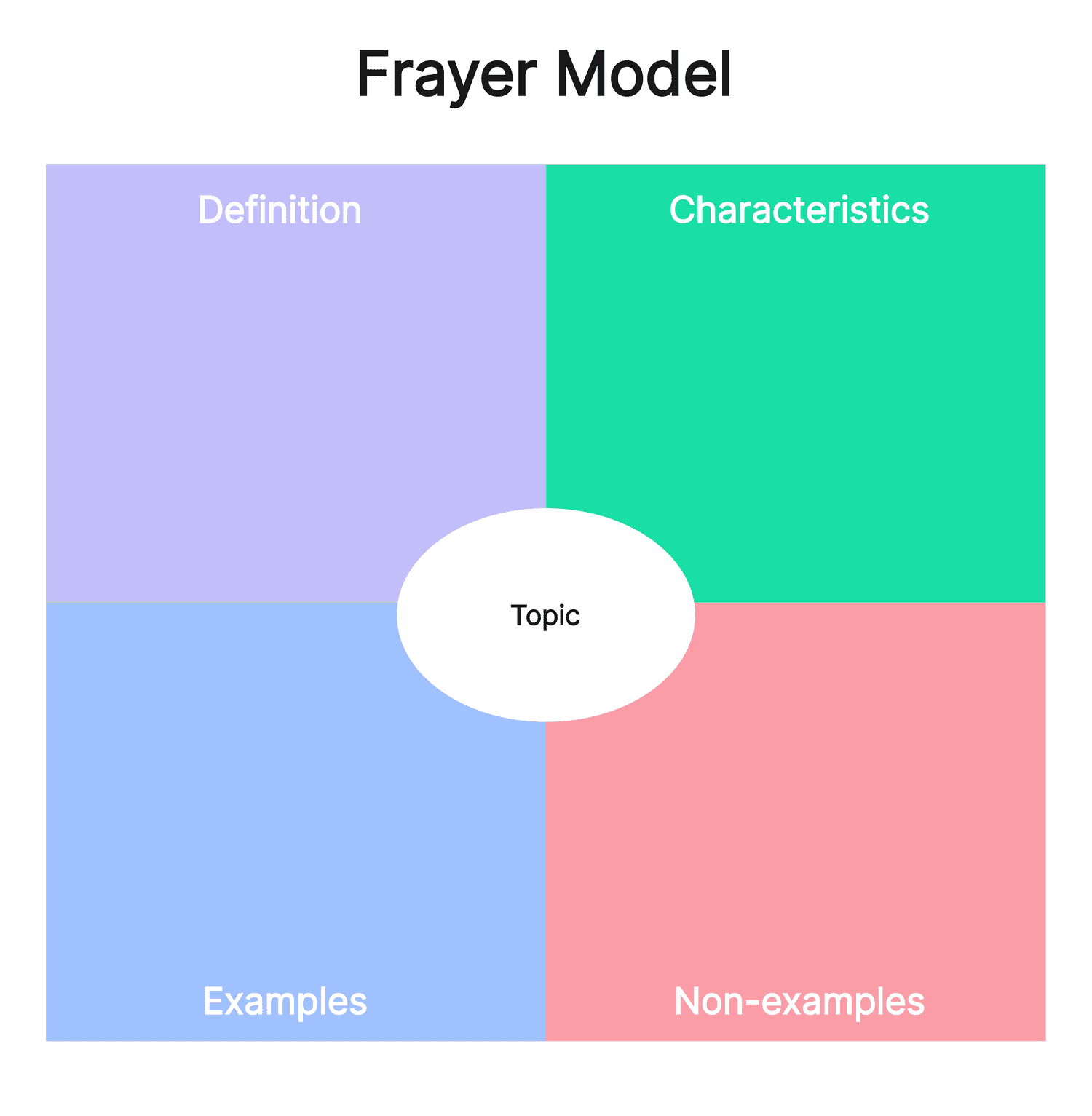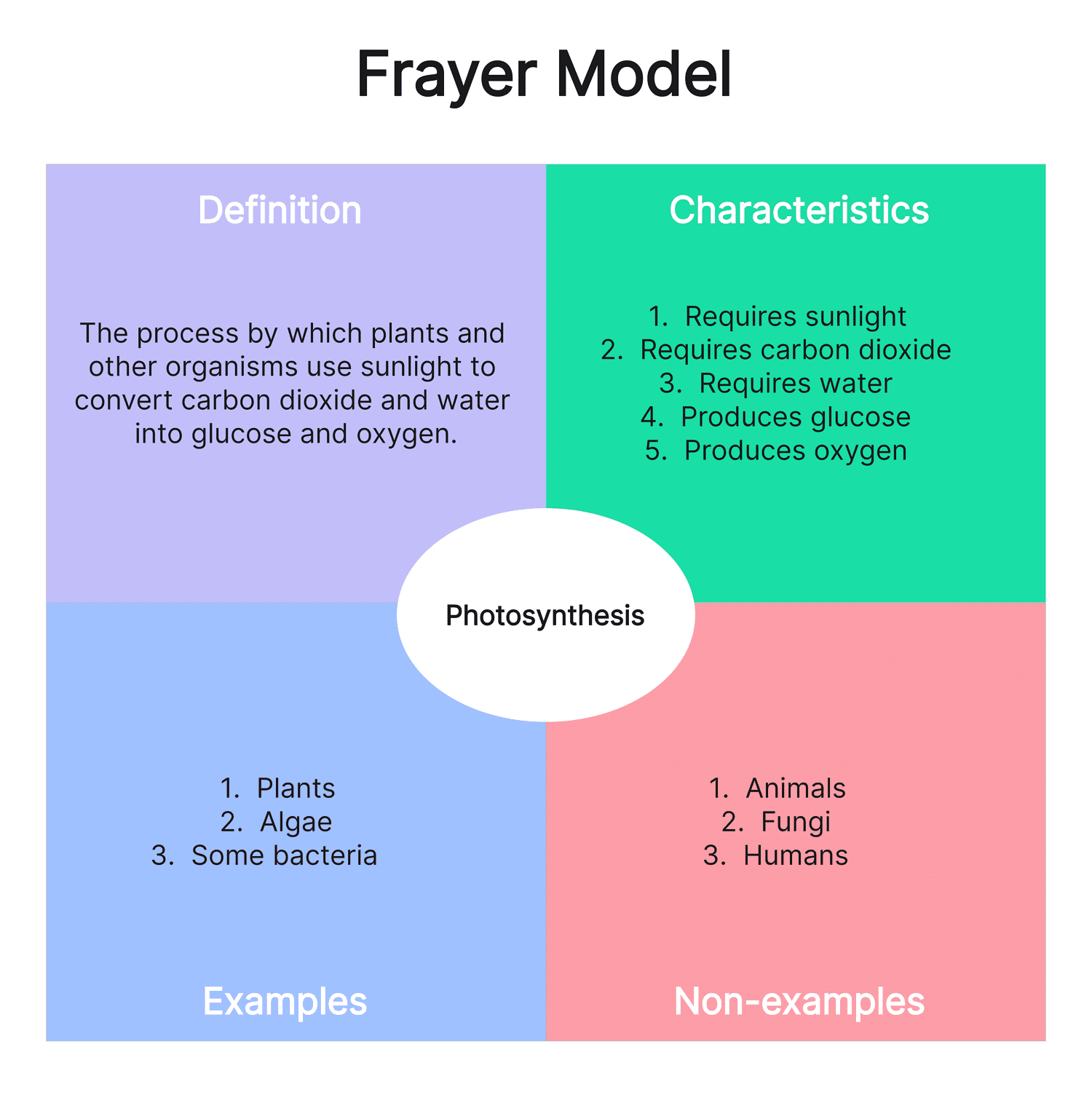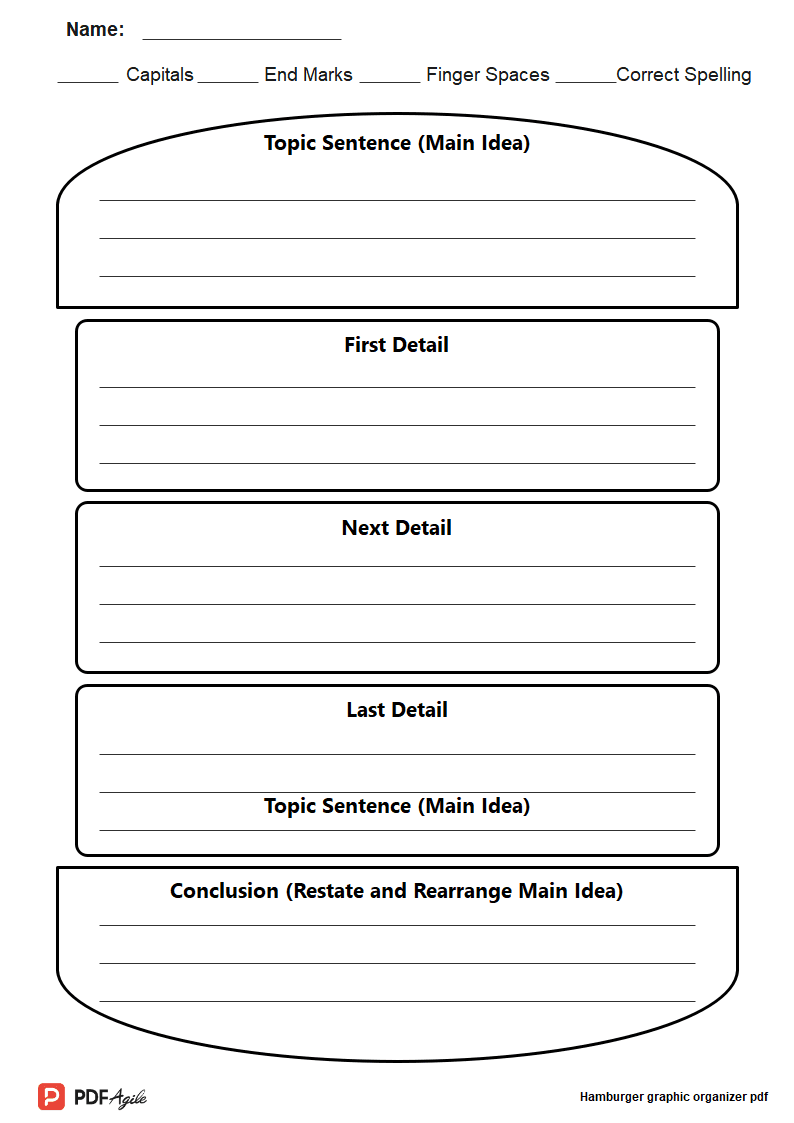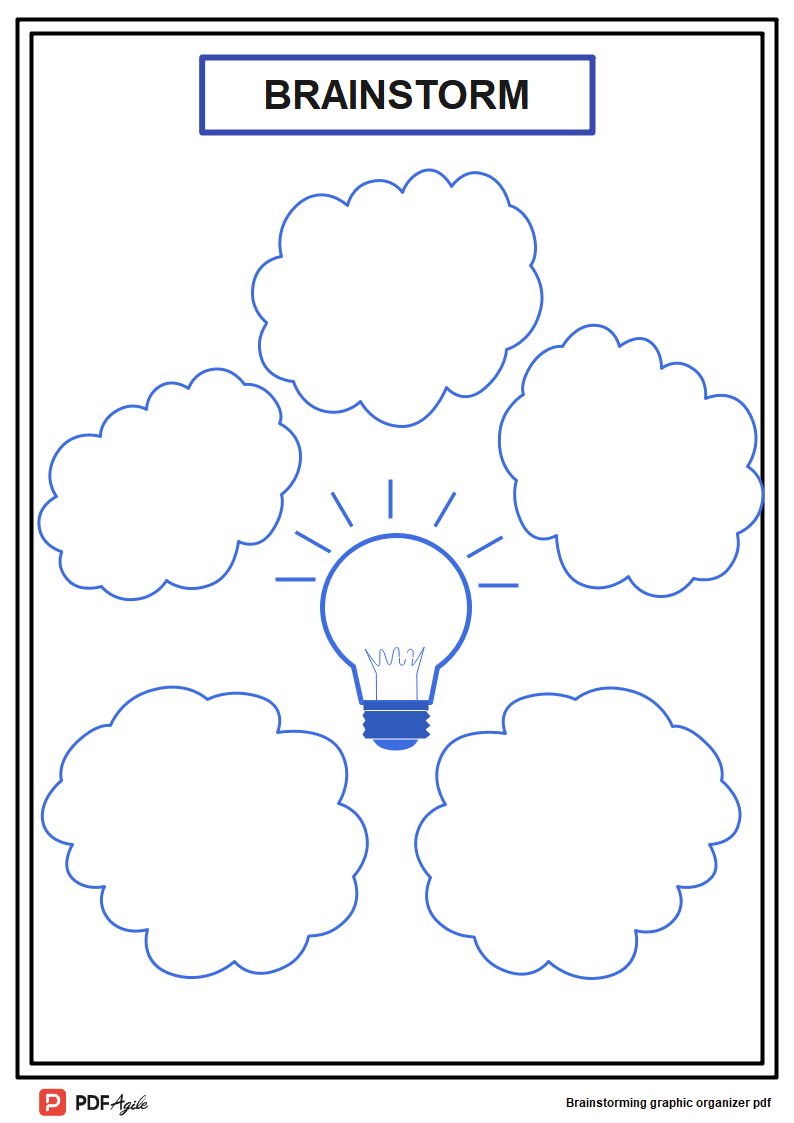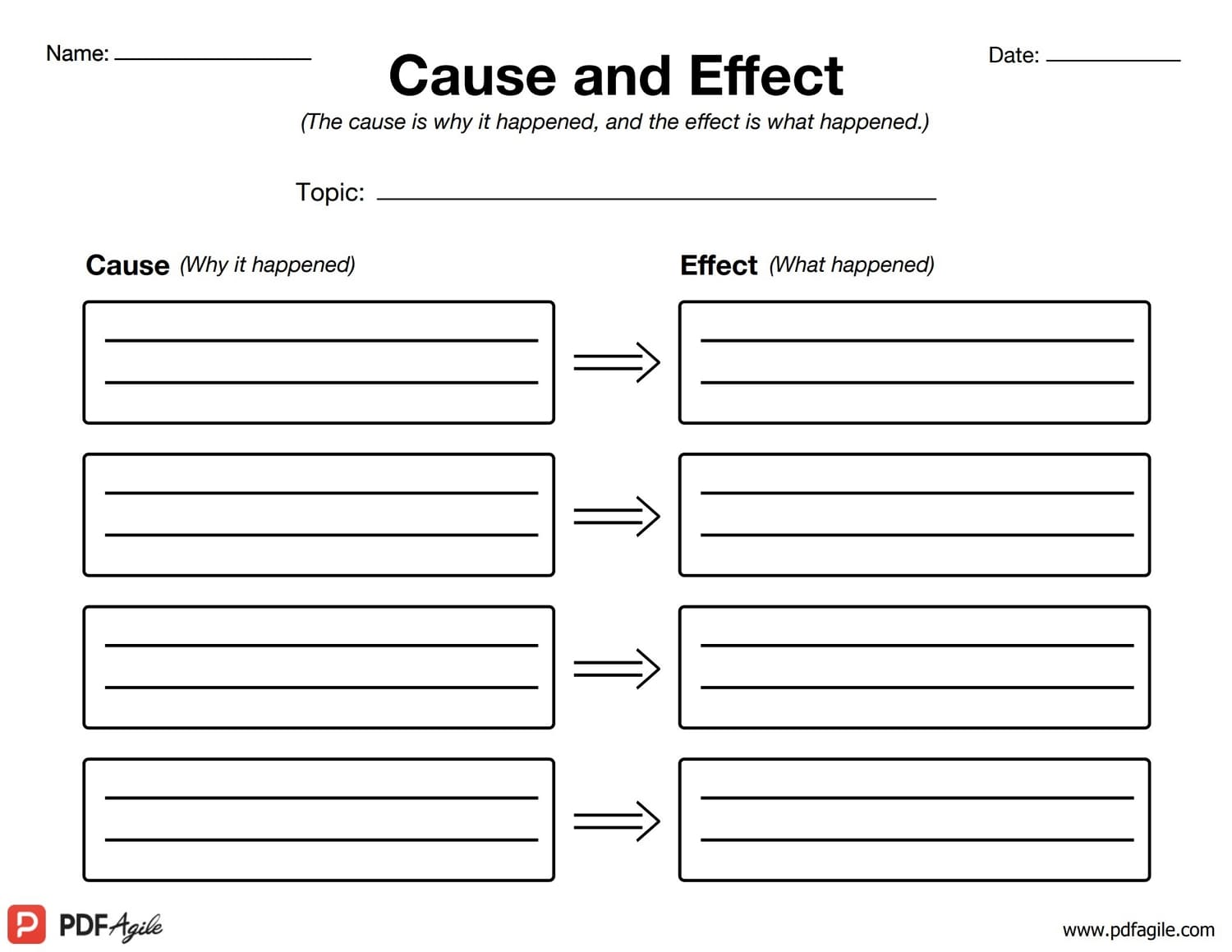What is a Frayer Model?
A Frayer model is a graphic organizer that helps students to explore and understand new concepts. It is named after its creator, Dorothy Frayer, who developed it in the 1960s. A Frayer model is a simple but effective tool that can be used in a variety of settings, including classrooms, homeschools, and workplaces.
What is a Frayer Model Graphic Organizer?
A Frayer model graphic organizer is a visual representation of a Frayer model. It typically has four sections:
- Definition: A brief statement or phrase that defines the concept.
- Characteristics: A list of specific features or qualities that define the concept.
- Examples: A list of specific examples that illustrate the concept.
- Non-Examples: A list of specific non-examples that help to further clarify the concept.
When to Use a Frayer Model Graphic Organizer?
Frayer model graphic organizers can be used to teach and reinforce any new concept. They are particularly helpful for concepts that are complex or abstract, or that have multiple dimensions.
Real-world scenarios where Frayer model graphic organizers can be used:
- In a history class: A Frayer model graphic organizer could be used to help students learn about the key events of the American Civil War.
- In a science class: A Frayer model graphic organizer could be used to help students learn about the different parts of a plant cell.
- In a math class: A Frayer model graphic organizer could be used to help students learn about the different types of geometric shapes.
- In a language arts class: A Frayer model graphic organizer could be used to help students learn about the different parts of speech.
- In a social studies class: A Frayer model graphic organizer could be used to help students learn about the different types of government.
What are the Main Components of the Frayer Model?
The four main components of the Frayer model are:
- Definition: A brief statement or phrase that defines the concept.
- Characteristics: A list of specific features or qualities that define the concept.
- Examples: A list of specific examples that illustrate the concept.
- Non-Examples: A list of specific non-examples that help to further clarify the concept.
Benefits of Using the Frayer Model Graphic Organizer
There are many benefits to using a Frayer model graphic organizer, including:
- Improved comprehension: Frayer model graphic organizers help students to better understand new concepts by providing a visual representation of the concept and its key features.
- Increased vocabulary: Frayer model graphic organizers help students to expand their vocabulary by introducing them to new words and phrases.
- Enhanced critical thinking skills: Frayer model graphic organizers help students to develop their critical thinking skills by encouraging them to identify the key features of a concept and to distinguish between examples and non-examples.
- Improved memory: Frayer model graphic organizers help students to remember new information by providing a visual cue that they can refer back to later.
Tips on how to Get the Most Out of the Frayer Model
To get the most out of the Frayer model, it is important to use it in a way that is meaningful and engaging for students. Here are some tips:
- Use Frayer model graphic organizers to teach new vocabulary words. When introducing new vocabulary words, write the word in the center of the organizer and then have students fill out the four sections of the organizer with the word’s definition, characteristics, examples, and non-examples. This will help students to learn the meaning of the word and to remember it in the long term.
- Use Frayer model graphic organizers to clarify complex concepts. When teaching complex concepts, break the concept down into its component parts and then have students fill out a Frayer model graphic organizer for each part. This will help students to understand the concept more deeply and to see how the different parts fit together.
- Use Frayer model graphic organizers to compare and contrast different concepts. When comparing and contrasting different concepts, have students create a Frayer model graphic organizer for each concept and then compare and contrast the two organizers. This will help students to identify the similarities and differences between the two concepts.
- Use Frayer model graphic organizers to identify the main idea of a text. When reading a text, have students create a Frayer model graphic organizer to summarize the main points of the text. This will help students to identify the key ideas of the text and to remember them in the long term.
- Have students create their own Frayer model graphic organizers. One of the best ways to get the most out of the Frayer model is to have students create their own organizers. This will help them to take ownership of their learning and to develop a deeper understanding of the concepts they are learning.
Here is a step-by-step guide on how to create a Frayer model graphic organizer:
- Write the concept in the center of the organizer.
- Fill out the four sections of the organizer:
- Definition
- Characteristics
- Examples
- Non-Examples
- Review the organizer with students and discuss the concept in more detail.
- Have students use the organizer to complete activities, such as writing sentences, drawing pictures, or creating concept maps.
Free Download a Printable Frayer Model Graphic Organizer Template
You can download a free printable Frayer model graphic organizer template by clicking Use Template button on this page.
You can also explore more graphic organizer PDF templates in PDF Agile Templates Center.


